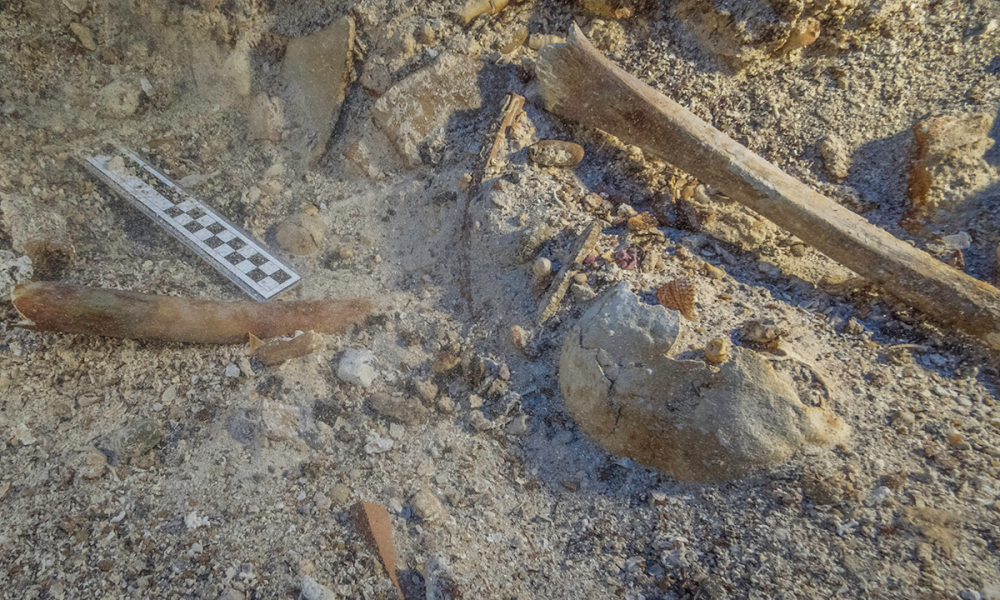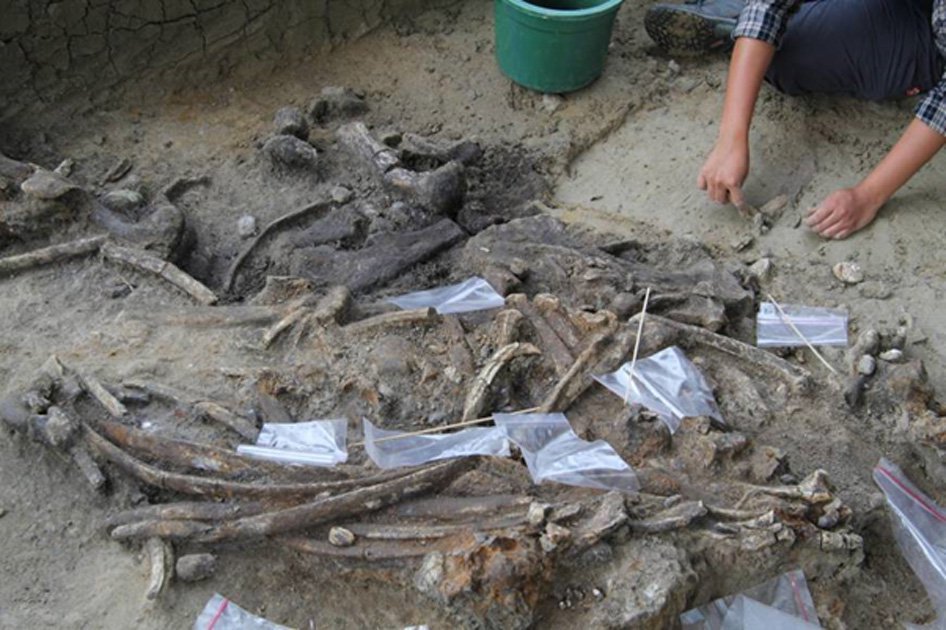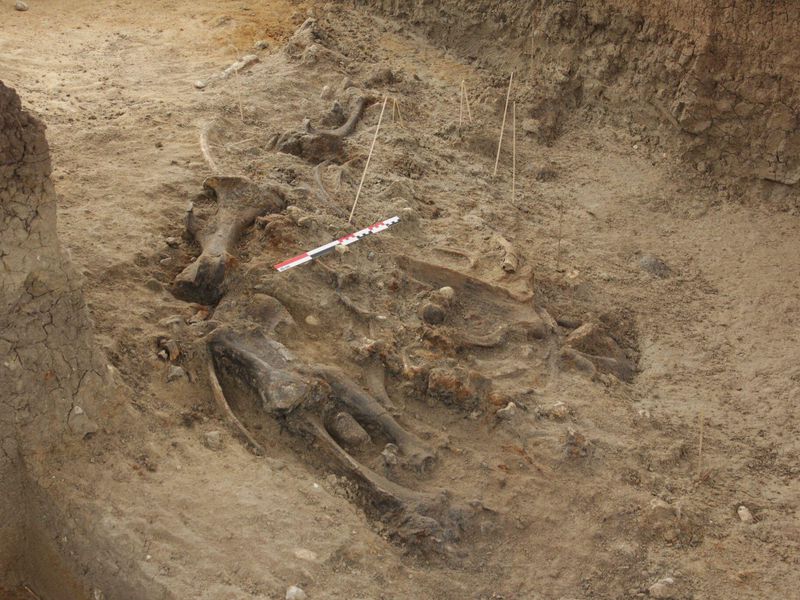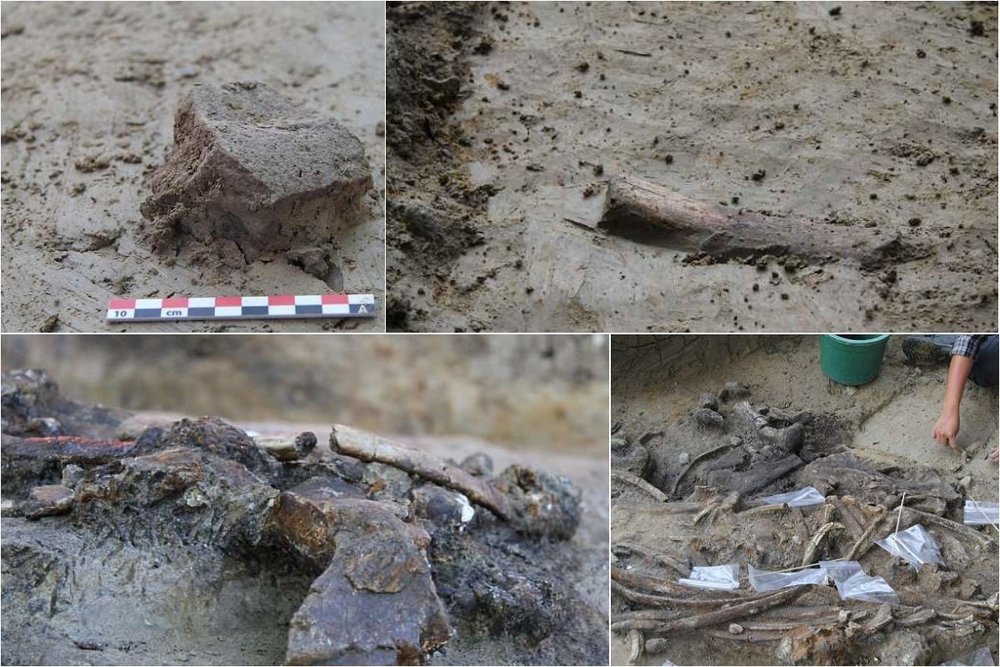
Remains of Earliest Human Settlement in Philippines Shocks Researchers

For decades anthropologists have been led to believe that humans or hominins stepped foot in the Philippines for the first time almost 67,000 years ago after a single bone was unearthed in Luzon’s Callao Cave that gave clues about the earliest human settlement in Southeast Asia – but a remarkable new research discovered new remains of a butchered rhinoceros, dating back to almost 709,000 years ago, on the island of Luzon in Philippines. Scientists are now convinced that humans have been in Philippines for much longer than previously estimated.

A recent excavation project in Kalinga, Philippines unearthed the skeleton of a butchered rhinoceros dating back to the early Middle Pleistocene
Humans in Philippines Arrived 709,000 years ago
The groundbreaking discovery of a rhinoceros remains, which was butchered using an ancient tool carved out of stone, has pushed back scientists’ previously predicted date of first human settlement in Philippines by hundreds of thousands of years. The discovery made on Philippine’s Luzon island was published in the Nature journal last Wednesday. The study claims that the origins human habitation in Philippines date back to 709,000 years ago – that is a huge time jump from the previously estimated date of 67,000 years ago.
In the 1950’s, various stone-carved weapons and tools were unearthed from the south-east Asian islands but due to the lack of dating technology, scientists were unable to tell how old those objects really were, although they were pretty certain that the findings indicated that the earliest human presence in Philippines dated back to hundreds of thousands of years ago.

It wasn’t until a recent excavation project in Luzon’s Kalinga province that the researchers were able to dig up more than 400 fossil remains of large animals as well as almost 60 ancient tools carved out of stone
Kalinga Excavation Project
One interesting finding from the excavation project was uncovering the remains of an extinct animal from the mammoth family called stegodon amongst skeletons of brown deer, lizards and freshwater turtles. But what really helped the scientists in determining the timeline of the first human settlement in Philippines was the discovery of a rhinoceros skeleton which was almost completely intact despite being hundreds of thousands of years old.
The remains were carefully extracted from the ground and taken to the lab where the electron-spin method revealed the true age of the rhinoceros. The electronic spin resonance method is the most accurate dating technology that can be used to rock, bones and tooth enamel and yields far more accurate results than radiocarbon dating method. According to the study, the skeleton of the ancient animal revealed patterns of physical trauma which indicated that it had been butchered using a stone weapons similar to those that were found during the excavation.
Lead researcher and author Thomas Ingicco said that the study was historical for a number of reasons including the fact that it revealed the real age of the excavation site which was several times older that what the researchers had previously estimated. It also provided evidence of human civilization in an extremely remote and isolated island that dates back to Middle Pleistocene. Ingicco says that because the fossil remains belong to the early Middle Pleistocene, it is quite likely that the island was inhabited by hominin species.

The 67,000-year-old foot bone that was previously excavated in Philippines belonged to a human dwarf species and was similar to the remains unearthed from the Flores, Indonesia
The Kalinga Toolmakers
Since none of the fossil remains excavated from the Philippines island belonged to humans, researchers say that that it is hard to tell where the earliest civilization on the island had come from. For now, the ancient inhabitants of Kalinga have been given the name of ‘Kalinga toolmakers’, opening doors to a new area of interest for researchers who want to find out more about these mysterious hominin species.
Ingicco said that finding animals with butchery marks like those on the recently unearthed rhinoceros skeleton are extremely rare, considering the age of the excavation site, and have only been seen in popular archeological site of Choukoutien in China and Indonesia. Scientists still have a lot to learn about the activities and behaviors of Southeast Asian hominin species from Middle Pleistocene.
The famous 67,000-year-old foot bone that was previously discovered on the same island of Philippines seemed to belong to a human dwarf species and was similar to the remains unearthed from the Flores in Indonesia which led researchers to believe that hobbits had once inhabited the islands of southeast Asia.
More in Medical Conditions
-
Is It Safe to Travel to Paris? Essential Tips for Tourists
When considering a trip to Paris, one of the first questions that often arises is, “Is it safe to travel to...
June 20, 2024 -
Hematoma vs Bruise: What Is the Difference?
When it comes to injuries, hematoma vs bruise are often used interchangeably, but they refer to different medical conditions. Understanding the...
June 12, 2024 -
What Is Unipolar Depression? Here’s What You Need to Know Right Now
Depression casts a long shadow over many lives, with symptoms that affect everything from our energy levels to our ability to...
June 7, 2024 -
A Comprehensive Guide on How to Heal Anxious Attachment Style
If you often find yourself seeking constant reassurance from your partner or requiring endless validation to feel secure, you may be...
June 1, 2024 -
Why Is My Skin Peeling on My Face After Skincare? Here’s What You Need to Know
Experiencing skin peeling on your face after implementing a skincare routine can be perplexing and frustrating. This phenomenon, where the skin...
May 23, 2024 -
What Is a Mental Edge, and How Do You Get It?
Have you ever wondered why some individuals seem unshakably confident under intense pressure, finding a way to excel when it matters...
May 15, 2024 -
When to Worry About Varicose Veins? Here’s What You Need to Know
Varicose veins are a common issue, affecting about 20% of adults. They’re usually seen as unsightly blemishes on the legs but...
May 12, 2024 -
Why Is Discipline Important: The Ultimate Guide to the Importance of Discipline
Discipline is undoubtedly one of life’s most crucial character traits. It shapes how we approach tasks, manage our time, and...
May 3, 2024 -
Have I Fallen Out of Love or Am I Depressed? Everything You Need to Know
Have I fallen out of love or am I depressed? You’re not alone in this query. In the diversity of human...
April 26, 2024















You must be logged in to post a comment Login